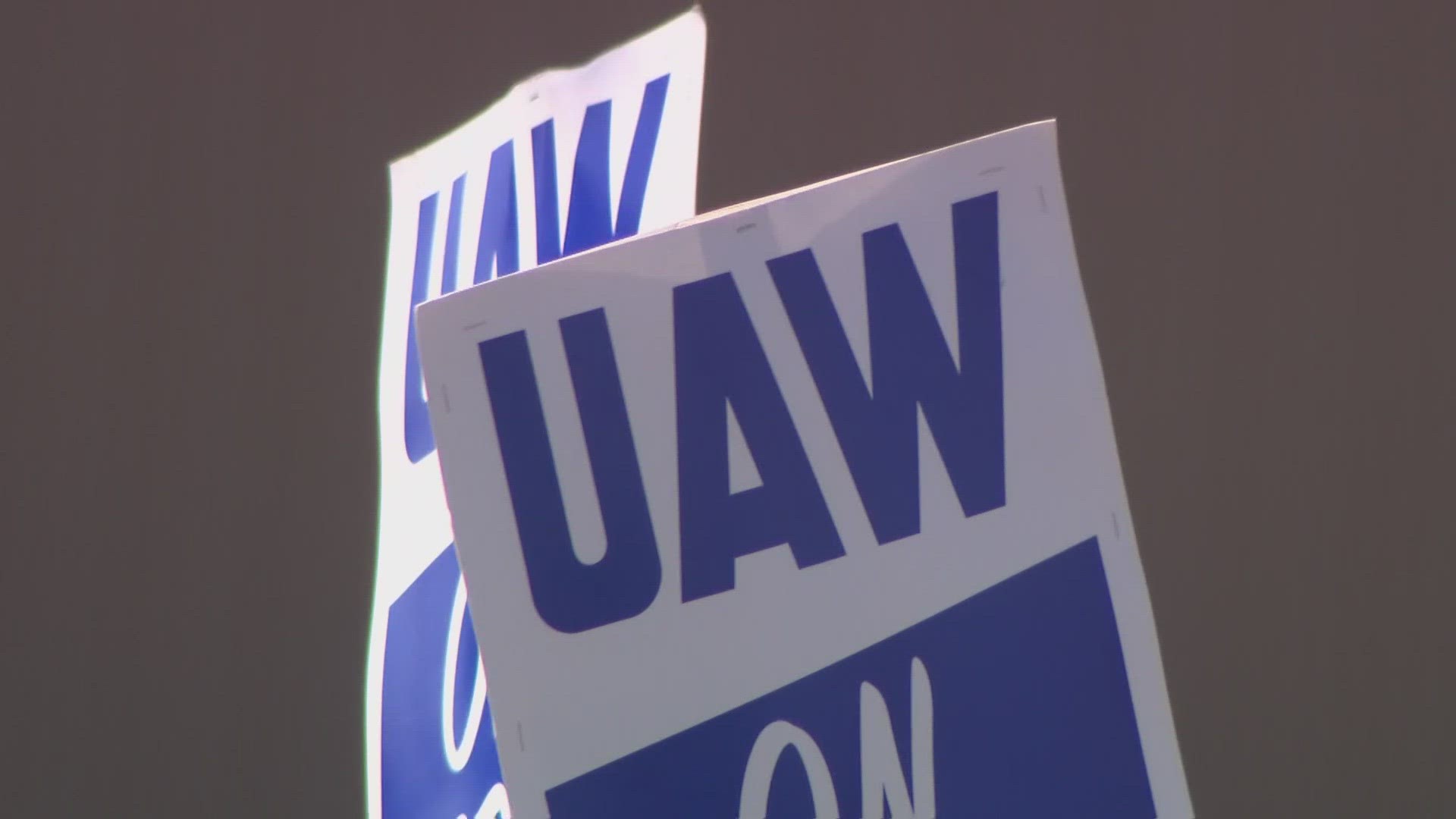WENTZVILLE, Mo. — For the first time in its 88-year history, the United Auto Workers are striking all three of the Big 3 American carmakers at the same time, but not every plant is on strike.
A small percentage of the union’s 146,000 members walked off the job at the GM assembly plant in Wentzville, Missouri; a Ford factory in Wayne, Michigan, near Detroit; and a Stellantis Jeep plant in Toledo, Ohio, at 11:59 p.m. Eastern Time on Thursday. In a video on the UAW website, UAW President Shawn Fain called the move a "new kind of strike."
The so-called "stand up strike" is intended to "keep the companies guessing as to where and when the next local will walk out," Fain said in the video.
The UAW targeted a handful of factories this time in a bid to get automakers closer to the union’s demand for 36% wage increases over four years. GM and Ford offered 20% and Stellantis, formerly Fiat Chrysler, offered 17.5%.
Why Wentzville?
GM’s Wentzville plant has nearly 4,000 UAW Local 2250 members and makes the GMC Canyon and Chevrolet Colorado midsize pickups, as well as the GMC Savana and Chevrolet Express full-size vans.
According to experts, what they make and how well they make it played into why they were chosen.
The union didn’t go after the companies’ big cash cows, which are full-size pickup trucks and big SUVs, instead targeting plants that build lower profit margin vehicles, Marick Masters, a business professor at Wayne State University in Detroit, told the Associated Press.
“They’re not putting them right into the corner," Masters said. "You put an animal in the corner and it’s dangerous.”
The Ford plant that's on strike employs about 3,300 workers, and it makes Bronco SUVs and Ranger midsize pickup trucks. The Toledo Jeep complex has about 5,800 workers and manufactures the Jeep Wrangler SUV and Gladiator pickup.
Glenn Kage Jr., the former president of Local 2250 and current union member, said the plants were chosen because of their productivity.
"We, the UAW, are striking the most productive plants in the corporations, each one. And it's sending a clear message, 'Sit down, negotiate, and let us come to an agreeable, equitable contract where everybody benefits,'" he said.
Kage also said the big reason they are striking stems from the recession.
He added, "General Motors and all of them received a concessionary contract in 2009 and that helped bail them out. If it wasn't for the concessions we made, the auto business in the United States would not exist how we know it today. Our members are in there busting their humps building the trucks and vans that built this country, so it’s only fair to that they pay us back for what we’ve been doing for them."
This isn't the first time UAW Local 2250 picketed.
In 2019, the UAW strike lasted six weeks.
The Missouri economy lost about $42.2 million a week from the GM strike alone, according to estimates by the Center for Automotive Research.
What happens next?
According to reporting from the Associated Press, Fain said there will be no negotiations Friday because union leaders will join rank-and-file workers on picket lines.
The union could pick more plants to strike in the coming days, and it all depends on progress — or lack of it — at the bargaining table, the UAW president says.
“If the companies continue to bargain in bad faith or continue to stall or continue to give us insulting offers, then our strike is going to continue to grow,” Fain said. The union’s strategy, he said, “will keep the companies guessing” about how the union might escalate the fight.

